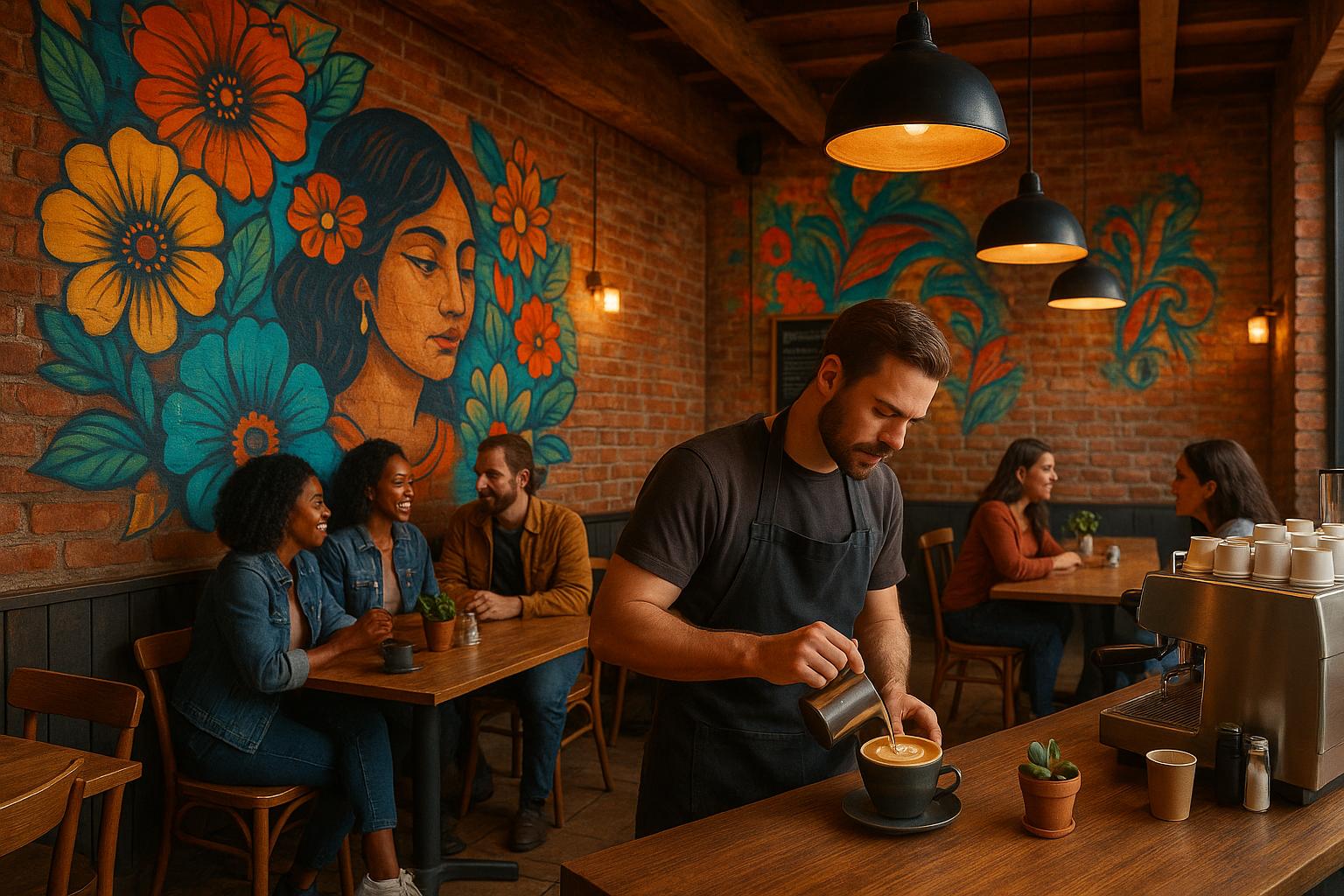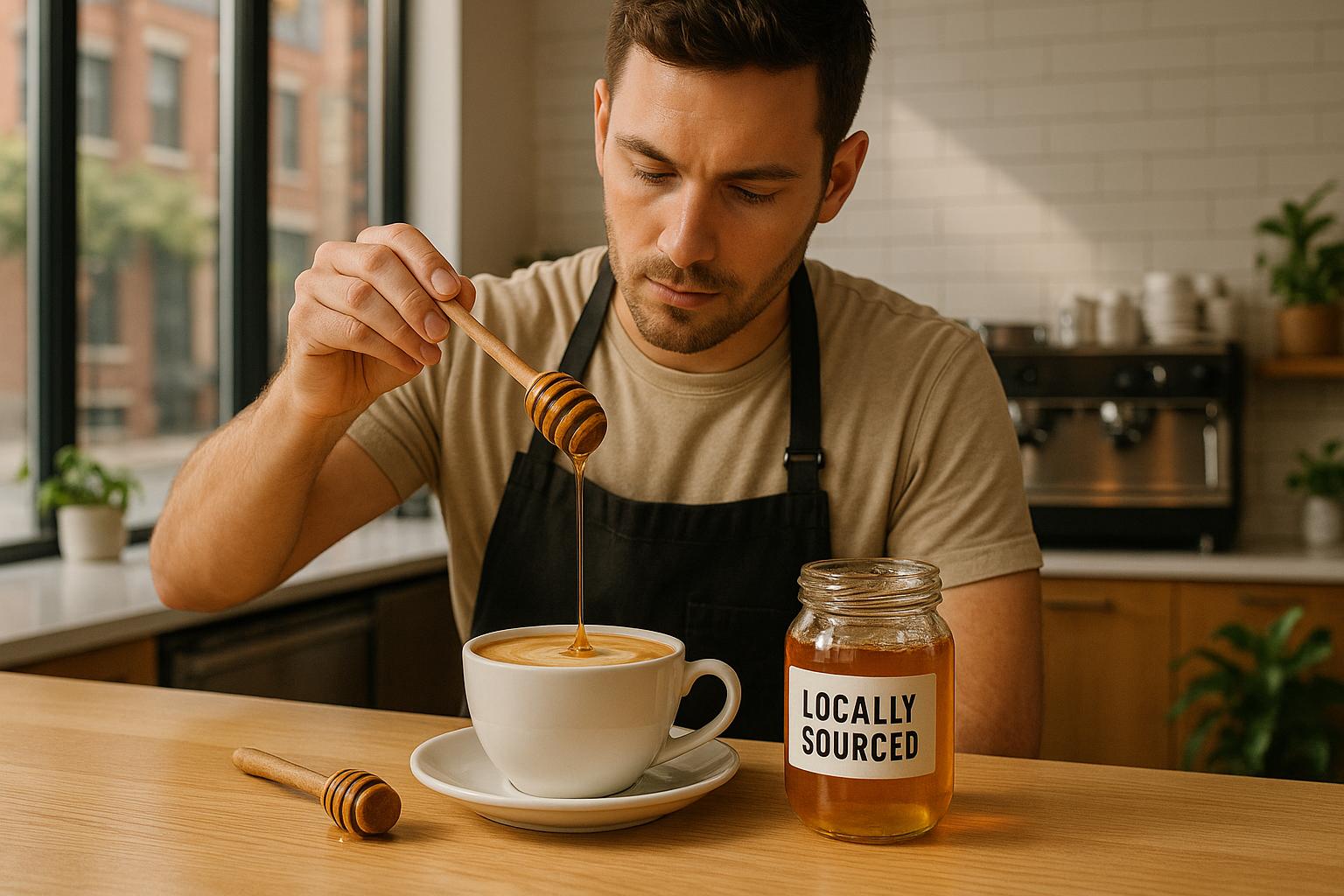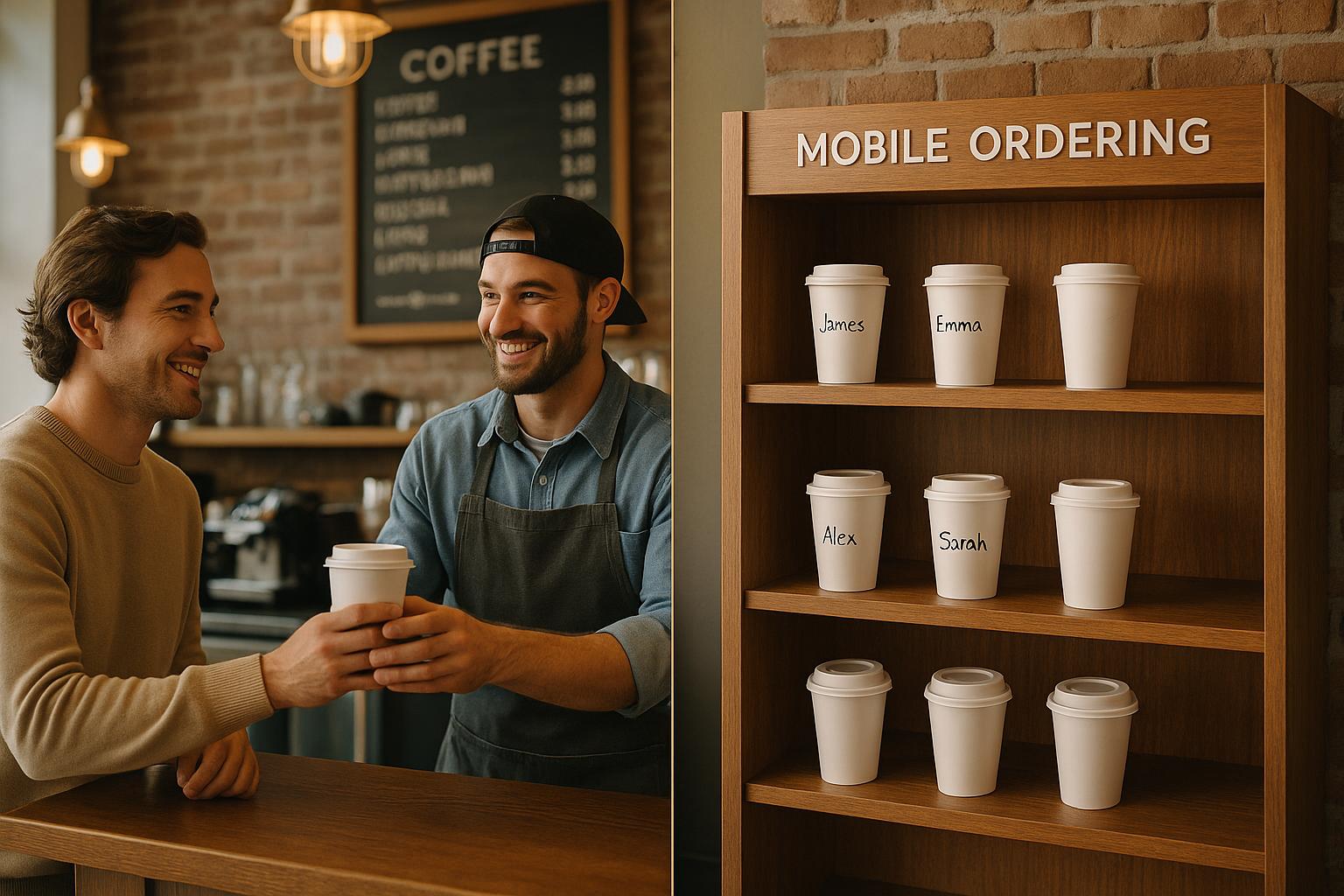Drip coffee is a cornerstone of Chicago’s café culture, offering a range of brewing methods to suit every taste. Whether you’re after a quick, consistent brew or a carefully crafted pour-over, Chicago’s coffeehouses deliver. This article dives into how three standout cafés - Ipsento 606, Passion House Coffee Roasters, and Metric Coffee - approach drip coffee using different techniques and tools, creating a diverse and flavorful coffee experience.
Key Highlights:
- Brewing Methods: Traditional machines, manual pour-overs, and automated systems dominate Chicago’s coffee scene.
- Ipsento 606: Combines high-efficiency batch brewing with a hands-on pour-over bar, blending speed and craftsmanship.
- Passion House Coffee Roasters: Focuses on single-origin beans with both batch brewing and manual pour-overs, offering rotating flavor profiles.
- Metric Coffee: Balances precision and simplicity with educational sessions and detailed flavor notes.
Chicago cafés ensure every cup reflects the care and expertise behind the brewing process, making it a must-visit city for coffee enthusiasts.
Chicago’s Specialty Coffee Scene
Drip Coffee Brewing Methods in Chicago
Chicago’s coffee scene showcases three main drip brewing methods: traditional machines, manual pour-overs, and automated systems. Each approach brings its own character to the city’s signature drip coffee experience. Let’s dive into how these methods shape what’s in your cup.
Traditional drip machines are all about reliability and efficiency. They work by using gravity to filter hot water through coffee grounds, delivering a steady stream of coffee into a carafe or cup[2]. While this method might seem straightforward, specialty coffee shops in Chicago have elevated it by using advanced machines that fine-tune water temperature and brew time for a more refined flavor profile[2]. This method is a go-to for medium-fine grinds and is perfect for serving large groups, offering consistent, clean-tasting coffee[1].
For a more hands-on approach, manual pour-overs let baristas take control of every brewing variable - from water temperature to pouring speed and coffee-to-water ratios[2]. Tools like the Hario V60, Kalita Wave, and Chemex are common choices, often paired with kettles and digital scales for precision[1][2]. This method is celebrated for bringing out subtle flavor nuances, resulting in sweet, clean cups of coffee[1]. It’s especially well-suited for lighter roasts, where the intricate flavors truly shine[2]. The grind size matters here: smaller pour-over cones work best with finer grinds (similar to table salt), while larger brewers like the Chemex perform better with medium-coarse grinds (resembling kosher salt)[1].
Automated systems combine the precision of manual brewing with the efficiency of machines, offering a modern twist on traditional methods. Chicago cafés use systems like Modbar, Poursteady, and Marco Beverage Systems SP9 to replicate the quality of a manual pour-over while maintaining consistency[3][4]. These systems are particularly useful for specialty single-origin coffees, where precision is key to highlighting their unique profiles.
Each brewing method offers a distinct experience. Traditional drip machines are perfect for busy mornings, delivering consistent coffee quickly. Manual pour-overs, on the other hand, provide a deeper level of control, allowing baristas to craft flavors with care - though they require more time and expertise. Automated systems strike a balance, offering the nuanced flavors of a pour-over with the reliability and speed of a machine. Whether you’re after a quick cup or a meticulously brewed masterpiece, Chicago’s cafés have you covered.
1. Ipsento 606
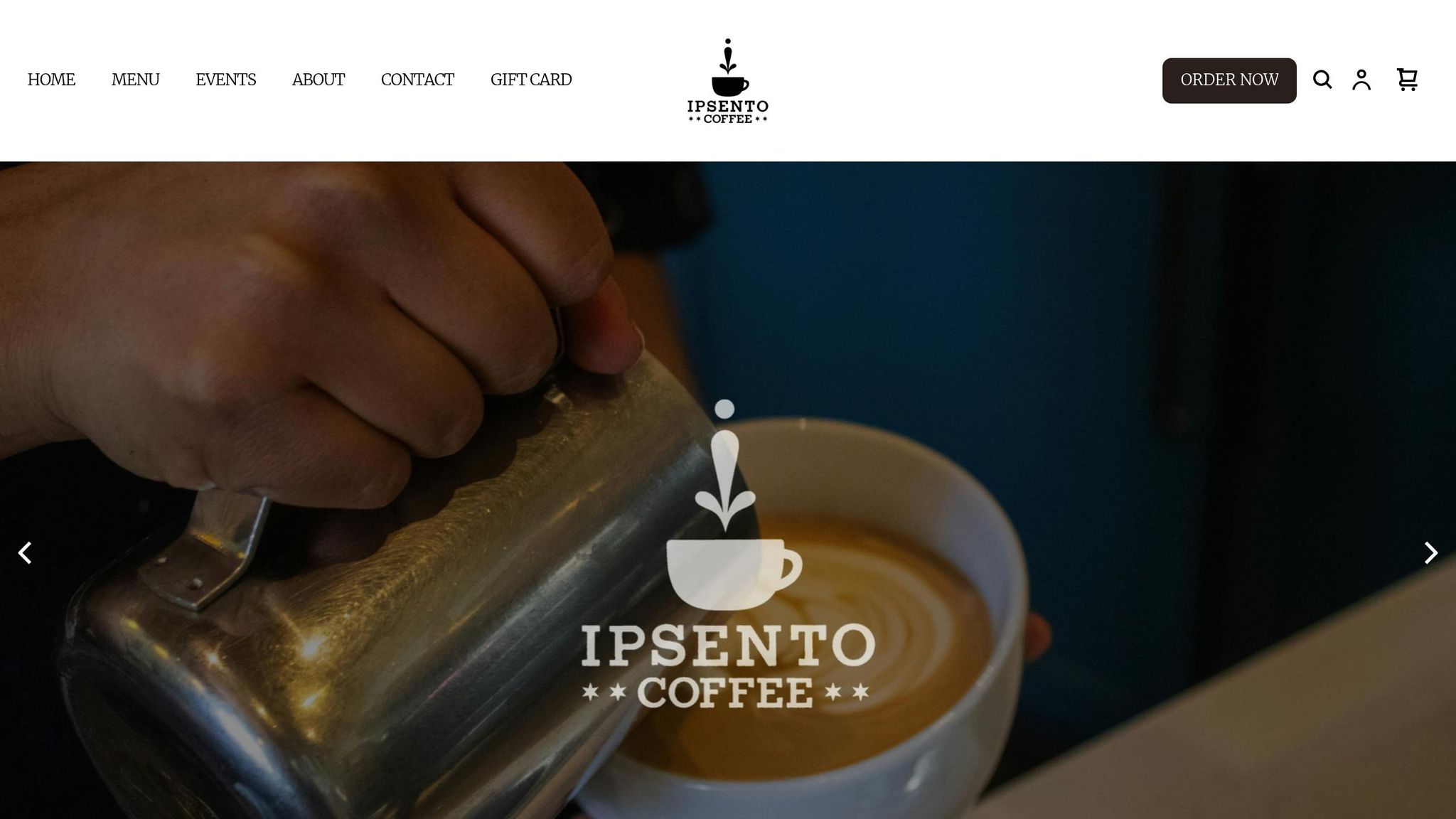
Nestled in Chicago's Wicker Park neighborhood, Ipsento 606 stands out by offering a unique dual brewing experience. Owner Tim Taylor has designed the café to highlight both efficiency and craftsmanship, giving customers a chance to witness two distinct brewing methods in action.
Brewing Methods
Ipsento 606 caters to a variety of coffee preferences by using two separate drip coffee systems. For high-volume orders, the café relies on a Fetco 2152-XTS double brewer paired with an EK 43 grinder, ensuring consistent quality and speed. On the other hand, the pour-over "slow bar" offers a more hands-on experience. Here, baristas use Baratza Forte grinders and Diguo variable temperature gooseneck kettles to craft each cup with precision. This combination of batch brewing and pour-over artistry reflects Chicago's reputation for blending technique with creativity.
"The slow-bar approach is not sustainable by itself, but it's something I still want to have because there is a growing interest", says Tim Taylor, Owner [5].
Atmosphere and Experience
The café's layout is intentionally designed to engage customers. As they navigate the space, they can watch the intricate brewing process unfold, offering a deeper appreciation for the craft behind their cup of coffee.
"We want them to see the craft", Taylor explains [5].
2. Passion House Coffee Roasters
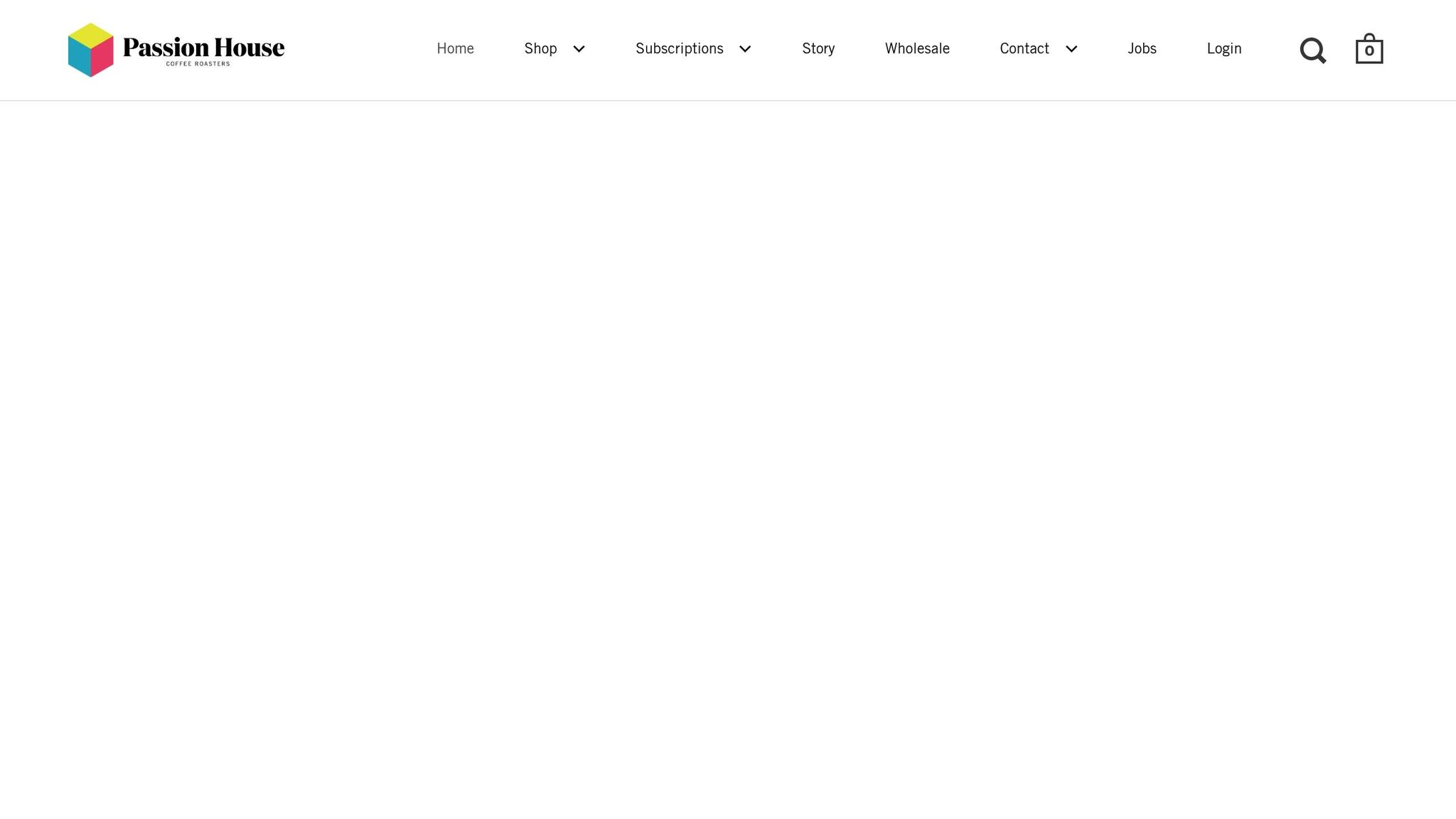
Nestled in Chicago's Logan Square, Passion House Coffee Roasters has earned a reputation for its meticulous approach to drip coffee. This café takes pride in showcasing the unique qualities of single-origin beans, using both an efficient batch brewing system and the more hands-on pour-over method. The result? A consistent yet personalized coffee experience that brings out the best in every bean.
Brewing Methods
At Passion House, coffee lovers can choose between two brewing styles: a quick and efficient batch brew or a manual pour-over for those who appreciate a more customized flavor profile. Both methods ensure that the distinct characteristics of each bean are celebrated in every cup.
Flavor Profiles
The café’s menu is a rotating showcase of single-origin coffees, offering a spectrum of flavors. From bright, fruity notes to bold, rich roasts, there’s always something new to discover. Seasonal updates keep the offerings fresh, giving customers the chance to explore a variety of taste experiences throughout the year.
Atmosphere and Experience
The vibe at Passion House Coffee Roasters is as inviting as its coffee. The Logan Square space blends modern design with a cozy, welcoming atmosphere, making it the perfect spot to sip and relax. Beyond serving expertly brewed coffee, the café also hosts tasting events and educational sessions, creating a space where coffee enthusiasts can deepen their knowledge and appreciation for specialty drip coffee. Whether you're there to learn or simply enjoy, Passion House offers more than just a cup - it’s an experience.
sbb-itb-1371159
3. Metric Coffee
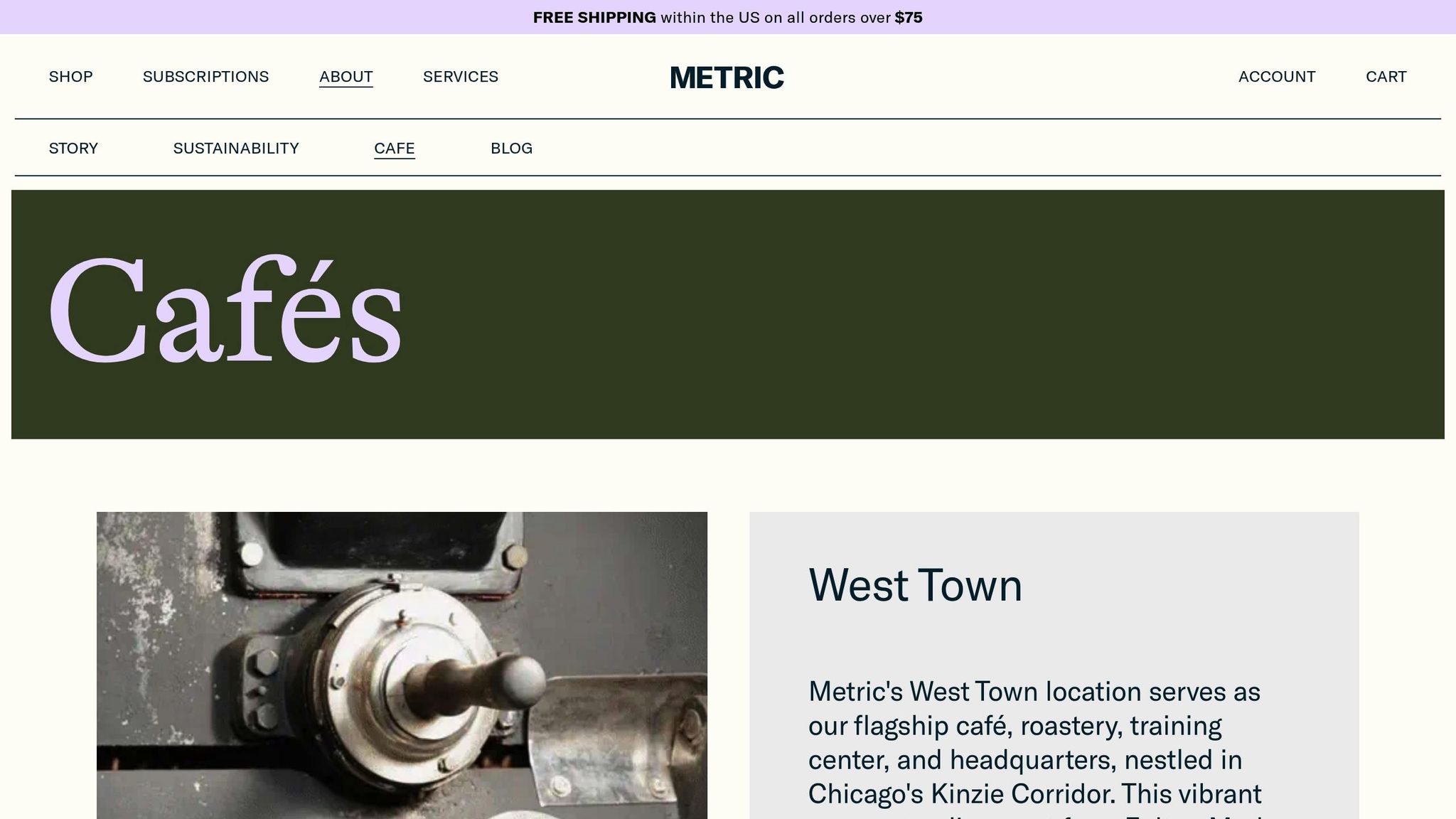
Metric Coffee stands out in Chicago's coffee scene, bringing precision and passion to every cup. Located in Avondale, the café takes pride in perfecting drip coffee, from sourcing the beans to the final brew.
Brewing Methods
At Metric Coffee, the brewing process is an art. They use a combination of controlled batch brewing and expert manual pour-overs, ensuring each cup highlights the natural character of the beans.
Flavor Profiles
Thanks to their meticulous approach, Metric Coffee emphasizes roasts that bring out the unique qualities of each bean. With detailed tasting notes available, customers can better understand and appreciate the subtle differences in flavor.
Atmosphere and Experience
The Avondale café is all about simplicity and warmth. Its sleek, modern design and abundant natural light create an inviting space. Beyond serving coffee, Metric Coffee offers educational sessions on brewing methods and flavor exploration, reflecting their dedication to both craft and community. It’s a place where technical expertise meets a welcoming café vibe.
Pros and Cons
Here's a closer look at the strengths and challenges of Ipsento 606, breaking down what makes it stand out and where it might fall short for coffee enthusiasts:
| Café | Strengths | Weaknesses |
|---|---|---|
| Ipsento 606 | Quality & Variety: The café’s multi-roaster approach brings a wide range of flavors, offering a chance to explore and learn about different coffee profiles[6]. Consistency: Dependable equipment ensures a reliable drip coffee experience. Community Vibe: With its focus on creating a welcoming, "third place" atmosphere and hosting events, it fosters a strong sense of connection. | Predictability: The rotating roasters, while exciting, might sacrifice some consistency compared to sticking with a single roaster. |
Ipsento 606's dedication to showcasing diverse coffee options provides a unique experience, even if it occasionally comes at the cost of uniformity.
Conclusion
Chicago's drip coffee culture thrives on a mix of brewing techniques that highlight craftsmanship and attention to detail. Every café has its own unique way of doing things, creating a coffee scene where precision and learning are just as important as the final cup.
Take Passion House, for instance - their Bee House pour-over method (15 g coffee, 240 g water, 2 minutes and 50 seconds of contact time) showcases the art of manual brewing with exacting care [7]. Metric Coffee takes things further with Pour Over workshops, offering a closer look at the subtleties of brewing. Meanwhile, Ipsento 606 brings its own flair to the table, adding even more variety to Chicago's coffee landscape.
Together, these approaches enrich the coffee experience, inviting drinkers to immerse themselves in the brewing process and connect with the people behind the craft.
For more about these brewing techniques, check out BestCafeChicago.org. Whether you're after a reliable daily brew or a chance to learn something new, Chicago's vibrant drip coffee scene has something to delight every coffee lover.
FAQs
How do traditional drip machines, manual pour-overs, and automated systems differ in Chicago’s coffee shops?
In Chicago’s coffee scene, traditional drip machines have become a staple for their consistency and convenience. These fully automated systems make brewing straightforward, but they fall short when it comes to offering control over key factors like water temperature and brewing time.
For those who value precision, manual pour-overs are the go-to method. Baristas take charge of every detail - from the exact water temperature to the pouring technique - allowing for a highly tailored flavor experience. This method is especially suited for highlighting the unique qualities of specialty coffee beans.
Then there are automated systems, like semi-automatic and fully automatic machines, which offer a middle ground. These systems are widely used in Chicago cafés because they combine speed and reliability with some degree of customization, making them ideal for fast-paced environments.
How do popular Chicago cafés like Ipsento 606, Passion House Coffee Roasters, and Metric Coffee maintain the quality and flavor of their drip coffee?
In Chicago, cafés like Ipsento 606, Passion House Coffee Roasters, and Metric Coffee have earned their reputation by focusing on what truly matters: exceptional coffee in every cup. Their secret? A meticulous approach that revolves around sourcing premium beans, mastering brewing techniques, and delivering consistent quality.
At the heart of their process is a commitment to freshly roasted beans, chosen to showcase rich and unique flavor profiles. These cafés pay close attention to details like water temperature and brewing times, ensuring each cup is perfectly balanced. Some even go a step further by offering single-origin beans or creating custom blends, elevating the coffee experience to something truly special.
Whether you're a seasoned coffee lover or just someone who enjoys a great cup of joe, these Chicago spots are celebrated for their passion and dedication to the art of coffee making.
How do single-origin beans influence the flavor of drip coffee at Passion House Coffee Roasters and Metric Coffee?
Single-origin beans add a layer of depth and character to the drip coffee experience, offering flavors that reflect their origin. At Passion House Coffee Roasters, these beans deliver a smooth, balanced profile with rich notes of baker’s chocolate, wildflower honey, caramel, roasted almond, and a subtle hint of stone fruit, all lifted by a touch of lemon.
Metric Coffee, on the other hand, brings a different spectrum of flavors depending on the bean’s source. You might taste hints of blueberry, chocolate, cinnamon, earthy tones, or even delicate floral notes in their single-origin selections.
These beans, sourced with care, capture the essence of their growing regions, giving coffee enthusiasts the opportunity to savor a variety of layered and intriguing flavors in every cup.
